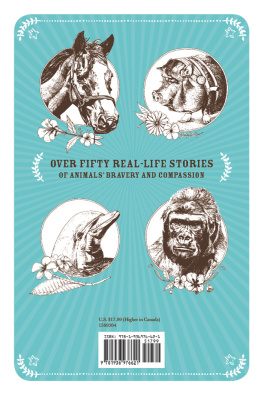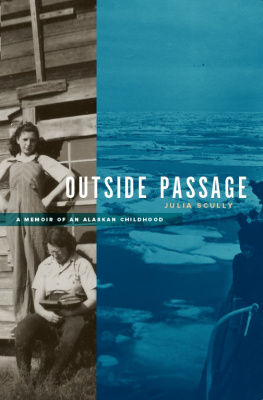IN SEARCH OF THE
TUSIRA DAISY
True Tales and Misadventures
of an Alaska Field Geologist
CRAIG WHITE
TO Box 221974 Anchorage, Alaska 33522-1374
ISBN 978-1-59433-066-7
eBook ISBN 978-1-59433-212-8
Library of Congress Catalog Card Number: 2007941525
Copyright 2007 Craig White
First Edition
All rights reserved, including the right of
reproduction in any form, or by any mechanical
or electronic means including photocopying or
recording, or by any information storage or
retrieval system, in whole or in part in any
form, and in any case not without the
written permission of the author and publisher.
Manufactured in the United States of America.
For Debbie, my partner in the great adventure,
also Jennifera far, far better version of myself,
and Bryan, who will always be my hero.
Acknowledgments
My sincere thanks to Tom Redin for providing me with memorable input on the exploratory work we did so long ago in the southern California offshore, and to Jim Vernon for reviewing several chapters, as well as correcting my oversights on the drop-coring programs. Thanks also to helicopter pilot Floyd Carlson who kept me out of trouble both in the air and in print. Also, to Jim Bielefeld of Kenai Aviation who took the time to recount for me the details leading up to the crash on McHugh Peak. I am grateful to Robin and Margo Buchan who struggled through several early drafts, and provided encouragement and invaluable information on the ins and outs of publishing. To my wife, Debbie, my daughter Jennifer Cleven, and my copy editor, Marthy Johnson, all of whom tirelessly reviewed drafts of the book, and to Evan Swensen, my publisher, also go my sincere thanks. Finally, I am deeply grateful to Alaskan artist, the late Joan Arend Kickbush for granting me permission to use her watercolor painting for my cover.
Craig White
Happy the man, and happy he alone,
He who can call today his own:
He who, secure within can say,
Tomorrow, do thy worst, for I have lived today.
Be fair or foul or rain or shine
The joys I have possessed, in spite of fate, are mine.
Not heaven itself upon the past has power,
But what has been, has been, and I have had my hour.
Horace
Authors note
All of the characters in this book are real and the events portrayed are accurate to the best of my recollection. In a few cases, I have changed the names of certain individuals at their request, or whom I judged might wish to remain anonymous, andin some caseswhose actions may not have been entirely flattering. Also, in several chapters of this book (Potty Training, The Tundra Daisy, After the Ball) I refer to data that, at one time, was proprietary to Union Oil Company and/or its partners. More recently, all of this information has appeared in the public domain, most of it posted online.
Introduction
Experience is a hard teacher. She gives
the test first and the lessons afterwards.
Anonymous
The gust of wind came out of nowhere. Slamming into the side of the helicopter like a freight train, it spun the aircraft sideways and swung the fuselage upward like a giant pendulum nearly into the plane of the spinning rotor blades. As my eyes shot across the cabin to the right seat, where geologist Bob Henderson now had the door brace in a choke hold, a sickening image of blurred rocky ground swung into view, framed for an instant in the right passenger window. Then, almost as quickly as it had attacked us, the wind subsided and the helicopter swung back to vertical. My eyes flashed forward to the pilots seat hoping for some reassuring sign, but Floyds hands were full trying to tame the wildly gyrating cyclic as he pedaled the right rudder hard to bring the aircraft into the wind and prevent a recurrence of our last acrobatic maneuver.
Holy screamin st! Our resident paleontologist, Harry Leffingwell, was the first to put our collective thoughts into words and had found a phrase that pretty much summed up the whole experience in a nutshell. Rubbing his eyes in disbelief, Harry shifted himself off Bobs lap, where he had been unceremoniously deposited, and moved back into the center of the rear seat. Jim Freeman, our party chief, was now digging around his own seat and on the floor of the Plexiglas bubble by his feet trying to recover his notebook, maps andmost important of allthe heavy, pointed rock hammer that had tried to implant itself in his skull during our little pirouette. Nobody seemed to be much in the mood for conversation.
Although the wind seemed to be easing up a little, the rain had become harder now and was pelting the canopy like buckshot. Floyd, determined to be prepared for the next gust, had pointed the nose of the helicopter into the wind, which meant we were now crabbing sideways along our line of flight. As thickets of alder and black spruce raced past us in a soggy gray blur below, I contemplated the wisdom of the choices Id made.
I had come to Alaska to fulfill a lifelong dream: to raise my family in the Last Frontier and to experience the adventure and excitement of this wild country. During the first three months Id been here, I had already skidded through axle-deep mud on the Alaska Highway, made a forced landing when an engine quit on my flight to Yakutat, and had nearly been arrested for a violation of the Fish and Game codes. How could I ask for any more adventure than this? And yet here I was again, getting my wishin spades!
Id read stories about the oil boom in west Texas and Oklahoma, and as an oilfield roustabout in college Id been a part of the latter-day efforts to squeeze the last few remaining drops of black sludge from the onshore fields in California, and had even played a role in the search for new oil in the California offshore. But after six years as an exploration geologist working for a major oil company in Los Angeles, I knew that the number of big oil discoveries left to be made in the Lower 48 states was rapidly dwindling.
In the spring of 1973, I joined a bunch of my oil-hunting buddies at a convention in San Diego to hear professional papers that were being presented. In the evenings we got together in the hotel lounge to form new friendships, cement old ones, and tell stories. It was at one of these after-session kickbacks that I met a group of geologists who worked in our Alaska office.
Its only just started up there, one of them told me. Theres so much landso many basins to explore for oil. Theres gotta be tons of it, millions maybe billions of barrels of oil, in fields scattered all over the state. Just like tundra daisies.
When I asked him what the heck a tundra daisy was, he rolled his eyes at me and explained, All those old rusty oil barrelsyou know55-gallon oil drums. Thousands of them scattered all over the arctic tundra, left behind after the military and civilian workers who did projects up there finished and went home. We call them tundra daisies. Thats what I mean. Theres gotta be just about as many oilfields in Alaska as there are tundra daisiesjust waiting for a smart guy to go up and discover them.










